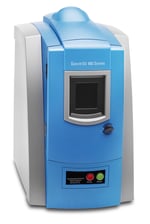Download your free guide
Guide to Spectroscopy for Used Oil Analytics
 Evaluating the wear condition of equipment is a primary requirement of condition monitoring programs. Oil wetted equipment will generate wear particles throughout its lifetime, the nature and rate of the wear varies from initial break in through to end of life seizure. The technique employed to detect wear and its severity is spectroscopy. Spectroscopy is a technique for detecting and quantifying the presence of elements in a material. Spectroscopy utilizes the fact that each element has a unique atomic structure. When subjected to the addition of energy, each element emits light of specific wavelengths, or colors. Since no two elements have the same pattern of spectral lines, the elements can be differentiated. The intensity of the emitted light is proportional to the quantity of the element present in the sample allowing the concentration of that element to be determined. Typically these techniques get their names from the method used to excite the elements.
Evaluating the wear condition of equipment is a primary requirement of condition monitoring programs. Oil wetted equipment will generate wear particles throughout its lifetime, the nature and rate of the wear varies from initial break in through to end of life seizure. The technique employed to detect wear and its severity is spectroscopy. Spectroscopy is a technique for detecting and quantifying the presence of elements in a material. Spectroscopy utilizes the fact that each element has a unique atomic structure. When subjected to the addition of energy, each element emits light of specific wavelengths, or colors. Since no two elements have the same pattern of spectral lines, the elements can be differentiated. The intensity of the emitted light is proportional to the quantity of the element present in the sample allowing the concentration of that element to be determined. Typically these techniques get their names from the method used to excite the elements.

Techniques Most Commonly Employed for Oil Analysis
- Flame Atomic Absorption Spectrometer (AAS)
- Inductively Coupled Plasma Spectroscopy (ICP)
- Arc/Spark/Rotating Disk Electrode Spectroscopy (RDE)
- X-Ray Fluorescence Spectroscopy (XRF)






